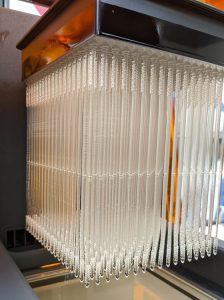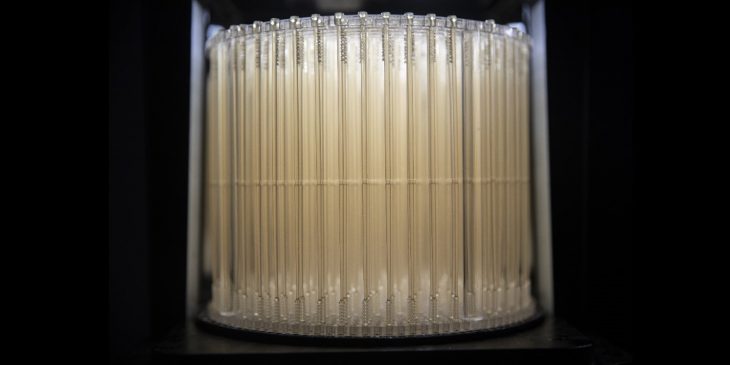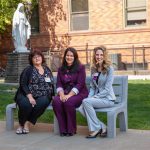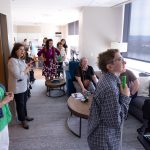The UPMC 3D Printing Program, founded in 2016 by radiologist Anish Ghodadra, M.D., traditionally focuses on printing three-dimensional anatomical models to help surgeons better prepare for surgery. But since the start of the pandemic, the program has pivoted to leverage its unique technology to produce COVID-19 testing supplies.
“After connecting with our supply chain team several months ago, we learned of commercially available products that could potentially face shortages,” said April Krivoniak, a biomedical engineer with the 3D Printing Program. “In an effort to help meet the needs of supply chain, staff and patients, we offered our resources to help design and manufacture solutions to supplement products in short supply, where applicable.”

3D swabs print at UPMC Montefiore.
The teams initially discussed multiple uses for 3D printing, including N-95 face masks and plastic face shields. Ultimately, they identified nasal swabs, which are used to collect specimens to test for the virus, as the most critical need.
“Leveraging our prior experiences working in medical device development, Dr. Ghodadra and I were able to design, test and produce swabs under a quality management system,” said Krivoniak. This process enabled the program to design and build prototypes for the swab, which then underwent extensive testing.
Once the design of the swab was finalized, an empty operating room in UPMC Montefiore was transformed into a printing “factory.” In addition to printing the swabs, the team developed processes to sterilize, package and distribute them.
Even though their design is similar to existing tools, the new swabs require special training for those using them. Currently, 13 UPMC specimen collection sites have used the 3D printed swabs to test patients, and the design is patent-pending.
The 3D Printing Program is considering the creation of more COVID-19-related supplies as shortages arise. Ultimately, the team would like to be able to create tools and supplies on demand.
“We hope to eventually offer our clinicians an in-house service that can develop medical device concepts and ideas and help bring those to fruition,” said Krivoniak.
Across the UPMC system, staff members are working diligently to find creative solutions to problems they encounter as a result of the COVID-19 pandemic. This is the second of a three-part series highlighting their efforts. Click here to read the first story and check back next Wednesday for the final installment.









